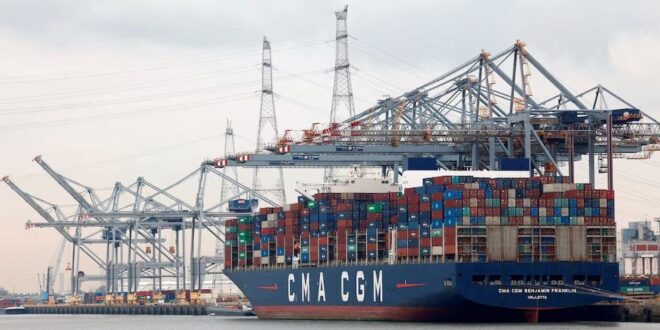GLOBAL trade flows have showed signs of accelerating at the start of 2024, as the major industrial economies began to pull out of the slump that started in late 2022, which should boost demand for transport fuels such as diesel.
Short-term activity indicators have been distorted by unusual weather patterns across North America and Europe, with an exceptionally mild December followed by more normal temperatures in January.
On balance, however, most indicators point to manufacturing and freight activity starting to accelerate around the turn of the year, in some cases quite markedly, despite relatively high interest rates.Seasonally-adjusted world trade volumes hit a 10-month high in January 2024, according to data compiled by the Netherlands Bureau of Economic Policy Analysis (CPB).
Volumes in January had increased compared with the prior year for the first time since March 2023 and before that October 2022 (World trade monitor, CPB, March 25, 2024).
Seasonally-adjusted global industrial production surged in December before easing back in January, which was likely to have been caused by the weather and timing of holidays.
But for the three months from November to January, output had risen by 1.7% compared with a year earlier, the fastest increase since October 2022.
A mixed picture
London’s Heathrow airport reported the busiest start to the year for air freight since before the coronavirus pandemic.
Air cargo handled in the first two months of the year was the highest since 2019 and up by 21% compared with last year.
Singapore’s massive maritime terminal also reported handling a record volume of shipping containers at the start of 2024.
Total container freight for Singapore was up by 18% in January and February compared with a year earlier, the fastest growth since 2018 and before that 2010.
South Korea’s Kospi-100 equity index, which tends to track global trade, given its heavy exposure to exporting firms, has been rising rapidly.
In the United States, container freight handled by the nine largest ports was up by almost 7% in January compared with a year ago.Major US railroads hauled almost 5% more multi-modal containers in January from a year earlier, the fastest growth since 2021 and before that 2016.
Other indicators, such as cargo handled through Narita airport in Japan and truck loads on US highways, paint a more mixed picture.Even there, however, freight movements were flat-lining after consistent declines in 2023 and late 2022, pointing to a trough forming.
Missile and drone attacks on container shipping in the Red Sea and Gulf of Aden have re-directed trade between Asia and Europe-North America on the longer and more expensive route round the Cape of Good Hope.
The disruption of container flows is likely to distort freight statistics for February and March, making it harder to confirm any change in the trend.
But the overall picture is that freight movements have started to rise even before the US Federal Reserve and other major central banks cut interest rates.
If the major central banks cut rates this year, as policymakers have indicated, to jump start spending on housing and expensive durable items, the rise in freight will accelerate.
Most middle petroleum distillates, including diesel, gas oil and a proportion of jet fuel, are used in freight transport, manufacturing and construction.
Industrial activity
Renewed growth in industrial activity will therefore boost distillate consumption and likely lift fuel prices and refinery margins, especially given inventories are already below the long-term average.
Moreover, middle distillates are the largest group of petroleum products, accounting for 29% of world oil consumption, rising to 35% if jet fuel is included.
Heavy fuel oils account for another 7% of global consumption, and some of that is used in ocean shipping, as well as in onshore power generation and industrial furnaces.
Higher freight volumes will therefore quickly translate into faster growth in consumption, likely lifting prices for crude oil as well as middle and heavy refined fuels.
The apparent stabilisation of manufacturing and freight, as well as the delicate balance in the fuel market, are among factors making central banks cautious about the timing and scale of rate cuts.
The most likely scenario is for modest rate cuts, a modest acceleration in manufacturing and freight, and moderately higher oil and fuel prices over the remainder of 2024. — Reuters
John Kemp is a Reuters market analyst. The views expressed are the writer’s own.
 BeritaKini.biz Berita Viral Terkini di Malaysia
BeritaKini.biz Berita Viral Terkini di Malaysia





